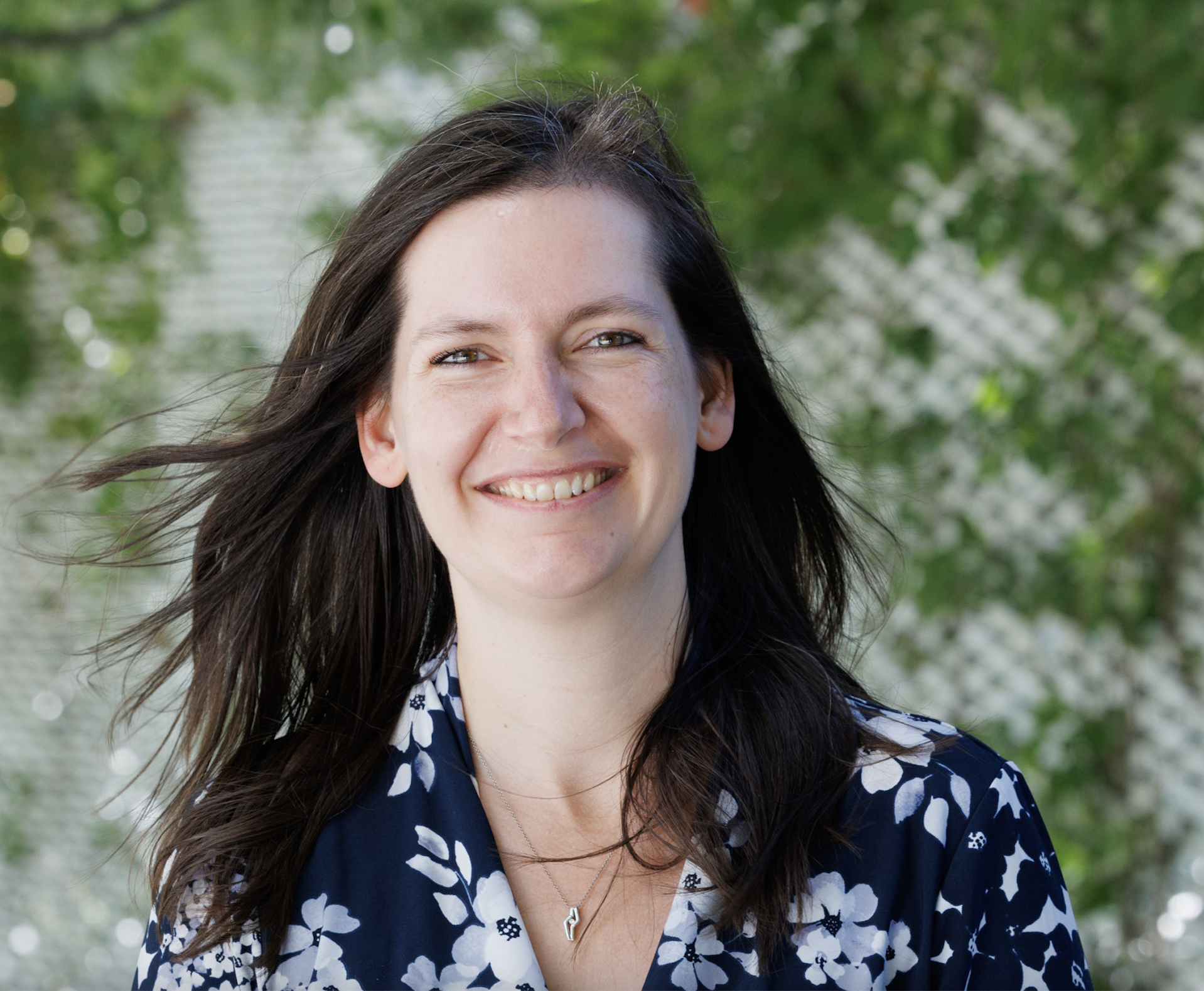Perceptual decision making
When we make daily-life decisions, we can rely on any source of information. For example, when driving up to an intersection, we use information about the color of the traffic light to decide whether to cross. Just seconds later, we may use information about the motion of approaching cars to decide whether it is safe to make a left turn. How do we flexibly select a source of information for a choice?
To answer this question, we developed a double-decision making paradigm in which subjects decide on the direction of motion as well as the color of a patch of dynamic dots. In the example below, motion is towards the right, and the dots are in majority yellow, so the subject would respond by making an eye-movement to the right-yellow target. We find that the sensory motion and color information can be acquired in parallel by the visual system. However, subjects rely on a serial process to combine information about the two features into a single decision.
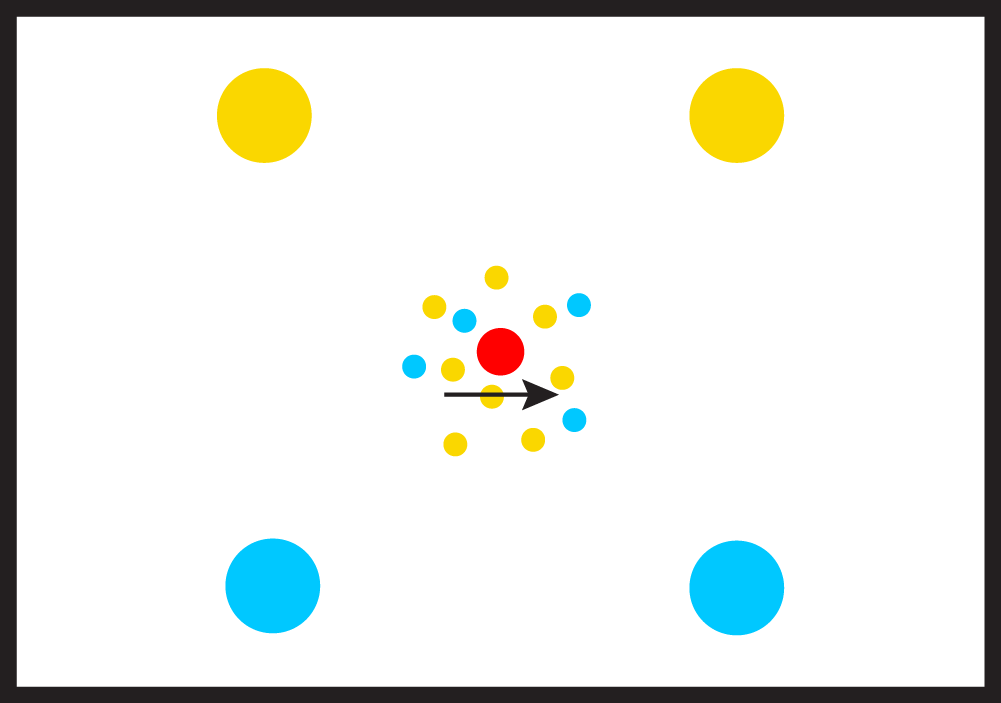
We study how neurons in parietal cortex can selectively process the motion and color information from distant specialized sensory areas. We use single-unit recordings and high-channel count electrophysiological measurements in monkeys to study how information about the motion and color decisions get combined into a single choice at the level of individual neurons and large neuronal populations.
Learn more
This 2 minute video explains what we learned by studying the decisions of human participants.
Representative work
-
D. Jeurissen*, A. Löffler*, Y.H.R. Kang*, A. Zylberberg^, D.M. Wolpert^, and M.N. Shadlen^ (2021). Serial time-multiplexed incorporation of evidence to make two decisions about one object. Talk at the Virtual Cosyne 2021 Conference, February 24 - 26. */^ Equal contribution. 15 Minute talk available on YouTube.
-
Y.H.R. Kang*, A. Löffler*, D. Jeurissen*, A. Zylberberg^, D.M. Wolpert^, M.N. Shadlen^ (2021). Multiple decisions about one object involve parallel sensory acquisition but time-multiplexed evidence incorporation. eLife, 10, e63721 PDF. Journal Club Slides (Google doc)
*/^ Equal contribution
Causal manipulation of neural activity
If a brain area can (temporarily) not provide useful information — due to a stroke, a traumatic brain injury, or experimental manipulation — can other brain areas then compensate for the lost function?
To answer this question, we use optogenetic, chemogenetic, and pharmacological tools to manipulate neural activity while monkeys make complex decisions. Across three different tasks, and using any of the three inactivation techniques, we find that manipulation of neural activity changes the animal’s choices. Surprisingly, the effects are only transient: behavioral effects fade away, even though neural activity is still suppressed. These results show that neurons in distant brain areas can compensate for lost functions.
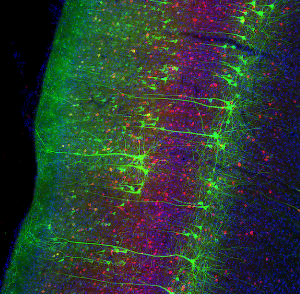
Our current research aims to reveal how neurons in distant brain areas change their activity pattern to compensate for the lost function of the inactivated region.
Representative work
-
D. Jeurissen*, S. Shushruth*, Y. El-Shamayleh, G.D. Horwitz, M.N. Shadlen (2022). Deficits in decision-making induced by parietal cortex inactivation are compensated at two time scales. Neuron, 110, 1-8. (Similar to: BioRxiv.) * Equal contribution. PDF. Data and code. Journal Club Slides (Google doc)
-
C.R. Fetsch, N.N. Odean, D. Jeurissen, Y. El-Shamayleh, G.D. Horwitz, M.N. Shadlen (2018). Focal optogenetic suppression in macaque area MT biases direction discrimination and choice confidence, but only transiently. eLife, 7, 36523. PDF
Attention, learning, and object perception
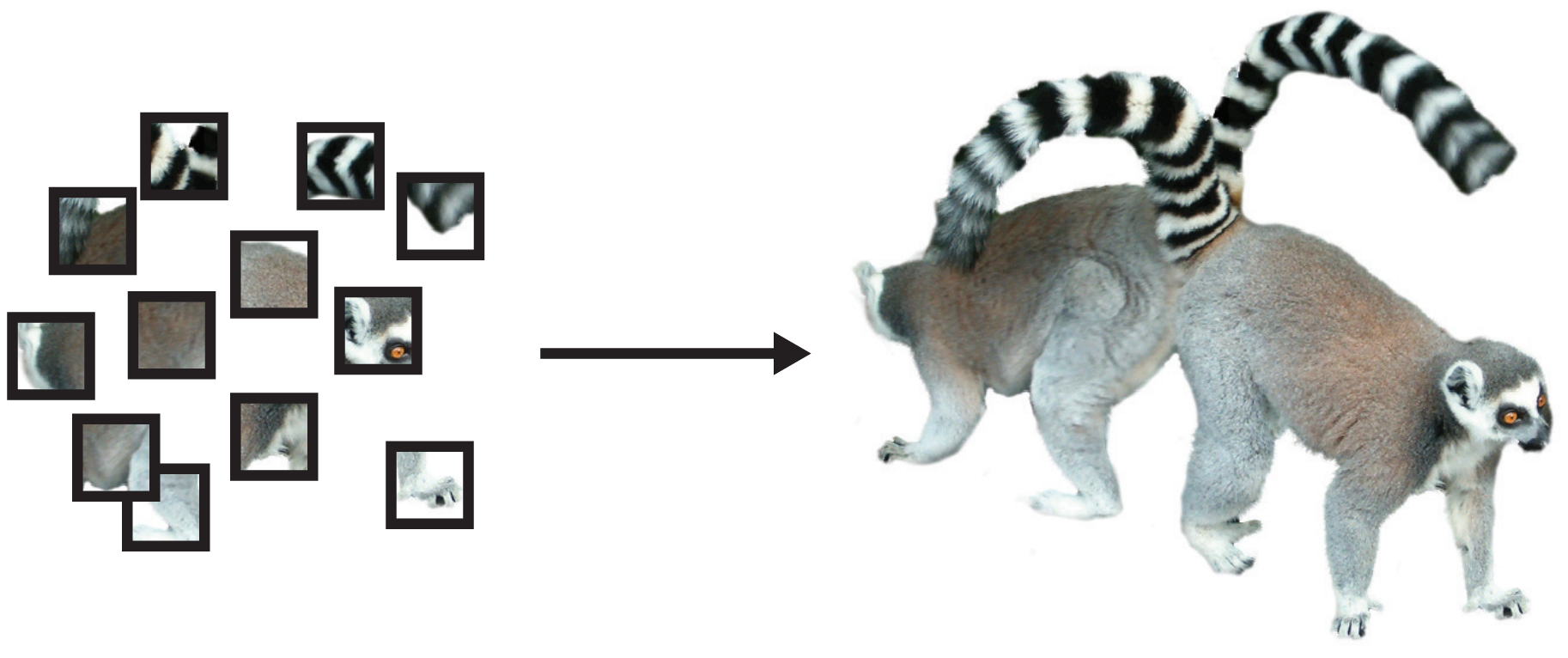
Each cell in the retina responds to light from only a tiny fragment of a visual scene. The fragmented input from the retina to the rest of the visual system has to be transformed into a representation of objects in front of a background, a process termed perceptual grouping. My graduate work at the Netherlands Institute for Neuroscience focused on how the primate visual system can achieve perceptual grouping of complex objects.
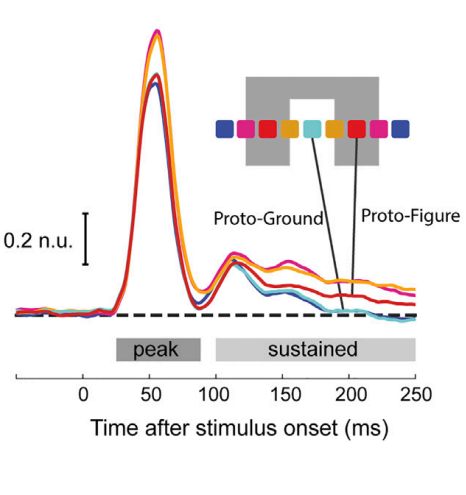
The fragment of the visual scene to which a cell responds is called its receptive field. Neurons in early visual areas show an increased response when their receptive field lies on a figure compared to on a background. This increased response is known as figure-ground modulation. Our experiments revealed that attention and learning selectively change the enhancement and suppression on neural signals, and thereby change the figure-ground modulation of complex shapes.
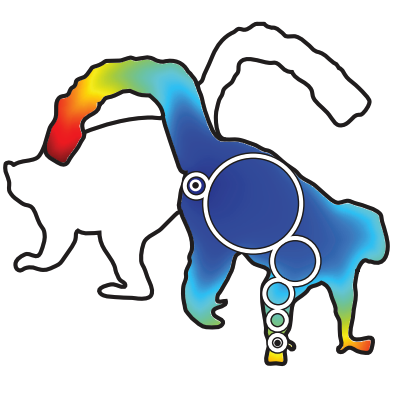
The findings from our work in the macaque monkey are relevant for our understanding of the human visual system. In behavioral experiments with humans we showed that perceptual grouping is achieved by spreading object-based attention over the surface of an object. Our neurocomputational growth-cone model — which is inspired by the results from monkey electrophysiology — accurately explains human behavior in a perceptual grouping task.
Representative work
-
M.W. Self*, D. Jeurissen*, A.F. van Ham, B. van Vugt, J. Poort, and P.R. Roelfsema (2019). The segmentation of proto-objects in the monkey primary visual cortex. Current Biology, 29, 1019-1029. PDF Journal Club Slides (Google doc)
* Equal contribution -
D. Jeurissen, M.W. Self, and P.R. Roelfsema (2016). Serial grouping of 2D-image regions with object-based attention in humans. eLife, 5, e14320. PDF Journal Club Slides (Google doc)
Collaborators
- Yasmine El-Shamayleh, Columbia University
- Chris Fetsch, Johns Hopkins University
- Greg Horwitz, University of Washington
- Shushruth, University of Pittsburgh
- Doris Tsao, UC Berkeley
- Daniel Wolpert, Columbia University
- Ariel Zylberberg, University of Rochester
Publications
Click here for a full list of my publications, including papers that are not highlighted on this page.

